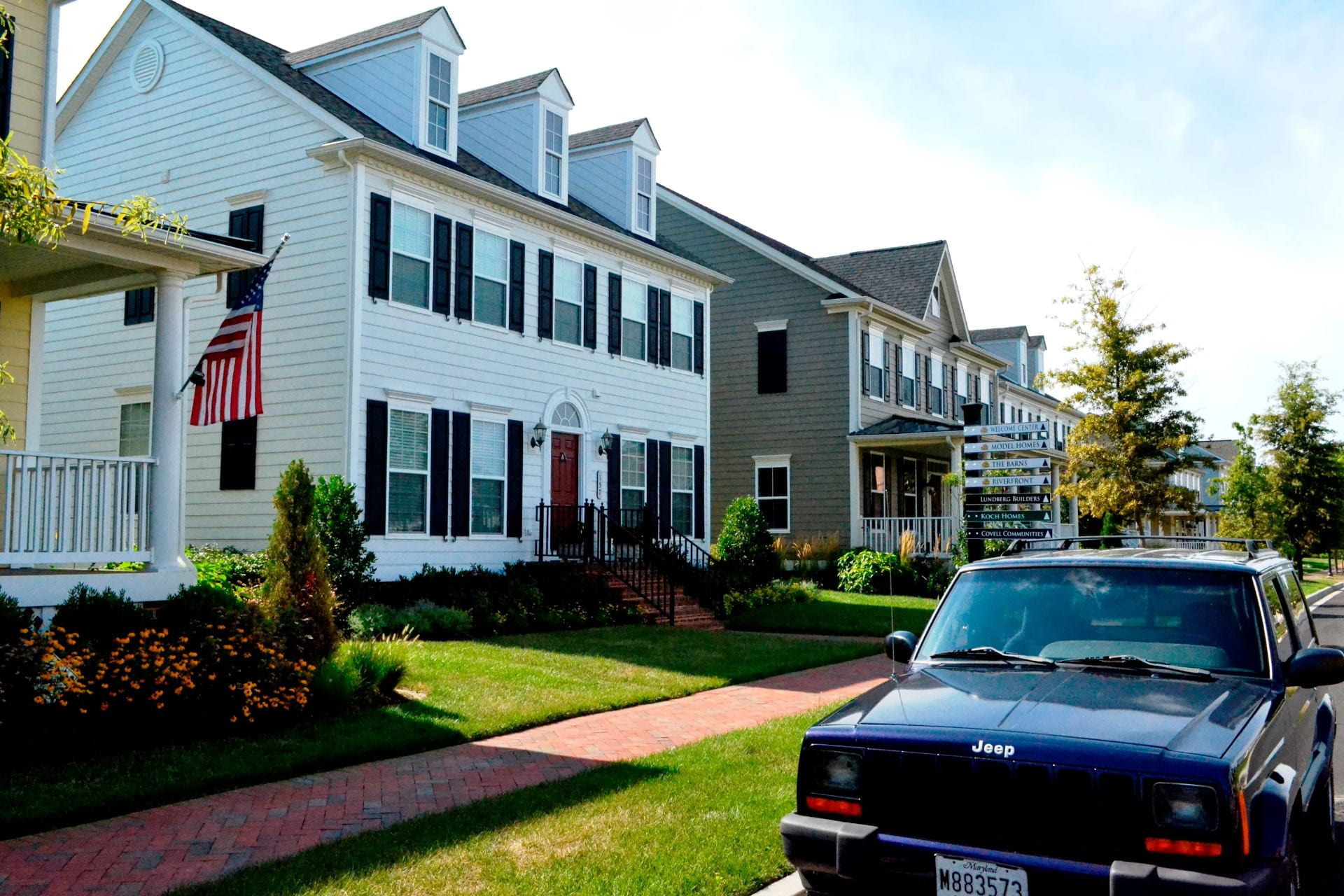HOUSING
Overview
Shelter, along with clothing, food, and water, are universally recognized as the most basic human needs. In today’s world, we refer to shelter as “housing,” or “being housed” regardless of whether the structure is a home, apartment, trailer, rented room, or assisted living community. Housing is housing, whether it is publicly or privately financed or administered, and is critically important to the well-being of the populace. Certainly, most are aware of the perils of being homeless or insecurely housed. However, this is only one facet of the issue. It’s also quite possible, and very common, to have too much shelter or just the wrong kind.
Understand
Key Actors in Housing
Many actors play a fundamental role in the maintenance, building, and regulation of the state’s housing inventory. However, as we’ll see, none are as decisive as the decisions made in each municipality and county. Communities do not make legally binding decisions without going through the local government process.
The State
The Office of State Planning Coordination’s mission is the continuous improvement of the coordination and effectiveness of land use decisions made by state, county, and municipal governments while building and maintaining a high quality of life in the State of Delaware.
The Preliminary Land Use Service serves as a review board of all stakeholder state agencies in order to determine land-use changes and permissions. The PLUS reviews most large-scale development proposals once they have been initially approved by a local government at these PLUS meetings, applicants must explain all relevant details of their project to a planner from OSPC and a panel of administrators representing other state agencies at the meeting, where they will discuss potential conflicts with state and local land use policy and other plans.
The state of Delaware has very clearly laid out their strategies for state policies and spending regarding housing. Their strategies involve outlining the state’s preferences regarding land-use policies, infrastructure investment, and other priorities as deemed essential by the Cabinet Committee of State Planning Issues. These strategies act as guidance for statewide decision making on land use issues and frame the plans of local governments throughout the state. The Office of State Planning works closely with all three counties and all 57 municipalities within these counties to create a state government adopted and approved map which prioritizes areas where new development should be prioritized and where new development should not be encouraged. These maps must be updated every five years and laying out these strategies allows the state to coordinate how local land use aligns with state land use policies.
Developers and Buildings
Because of the macro-economic conditions throughout the state, nonprofits, developers, and builders are the primary driving force behind housing production in Delaware.
Like all public and private organizations, the product that a developer or builder produces may vary greatly, both in terms of quality, but also when judged through the lens of how willing they may be to be closely coordinated with state or local governments. A developer or builder may be reluctant to pursue some aspects of a project that might be desirable to state or local land use policy makers because it is simply not feasible from a financial perspective in their experience or opinion. Developers are frequently cast as villains, oftentimes unfairly. It is essential for the general public to remember that developers are in business, and businesses simply need to make money in order to survive and pay their contractors and employees. This may mean that some requests by state and local policy makers are unreasonable, but that does not mean that policy makers should not try to pursue their own goals and objectives.
Simply put, every parcel is strictly regulated by the land use and zoning codes applied to that parcel. Sometimes these uses are generalized into categories such as “residential,” “commercial,” or “industrial,” but every parcel of land is unique in terms of both its characteristics and the regulations and laws applied to that parcel. Obviously, housing deals largely with the “residential” designation. But what type of housing? This is where the details governing each parcel of land are determined by each of the 57 municipalities in Delaware, along with its three counties.
Key Issues in Housing
Affordability
According to HUD, the general rule of thumb is housing should cost no more than thirty percent of an individual’s gross monthly income. Unfortunately, this statistic is not achievable for every individual or family in the United States. According to Housing Alliance Delaware, the state lacks 18,000 affordable and available rental housing units for those looking to rent within these means.
Suitability
Families
According to the HUD Income Database, the average collective income for a four-person household in Delaware reaches just over 77,000 dollars a year. Therefore, the state needs to have an adequate stock and influx of housing options for most working-class families that fall within this income bracket. The housing options need to be not only suitable physically for an active and young family, but also financially feasible so these families have opportunities and ability to expand and grow.
Elderly
According to the AARP Public Policy Institute, 89% of Americans aged 50 and over want to remain in their homes as long as possible. Similarly, The Road Ahead: AARP Survey on Community Services in Delaware found that 85% of Delawareans aged 65 or older believe it is “very important” or “extremely important” to remain in their home if possible. Therefore, many communities are becoming more concerned that they should adapt their local land use policies in order to better serve and assist these elderly residents who would prefer to stay in their homes.
Placement
Placement of newly developed and affordable housing options remains extremely important for a variety of reasons. In an ideal scenario, we would almost always want new housing to be located within close proximity to schools, public transit, shopping centers, and so forth. This is critically important for some demographic groups such as special needs populations, households without access to an automobile, and the elderly. This approach to housing development is a core element of planning.
State
To coincide with the set of housing strategies the state sets out every five years, the Delaware State Housing Authority is required by the U.S. Department of Housing and Urban Development to submit an annual report, laying out how the authority plans to allocate funds towards housing development and renovations for the fiscal year. The overall goal of the DSHA by providing these plans is to support the development of viable communities by providing decent housing and a suitable living environment for low- and moderate-income persons.
Local
22 Delaware Code §702 requires Delaware municipalities to develop a comprehensive plan every five years. A comprehensive plan may highlight potential issues that may arise over the next several years or even decades. Examples may include unforeseen shifts in demography (such as a growing elderly population), or show needs for more, or less, housing. In short, the requirement compels municipalities to continuously plan for and evaluate the future. Most Delaware towns and cities will offer their comprehensive plan on their website. The state’s PLUS portal is also an excellent resource, particularly for plans and projects happening right now.
Municipalities may want to also consider implementing an affordability plan or housing inventory analysis or as a recommendation to include within a Comp Plan. Looking at the affordability of homes and income rates across various demographics can help guide municipal decision making in the near term.
Municipalities may also opt to play a direct role in the provision of housing. If a municipality feels the need for the development of affordable housing and the market is not providing affordable housing, then a local government can always purchase property and pursue their desired housing development types on their own. Most recently, the state of Delaware received funding through the American Rescue Plan and allocated 26.4 million dollars to creating 350 affordable homes in Wilmington. While this development was created through nonprofits, the city encouraged affordable housing development throughout the process. This housing development project also included millions of dollars of investment in surrounding schools, transportation, healthcare, and community development.
Obviously, the housing plan is only a single (yet highly integrated) component of a municipality’s comprehensive plan. To be successfully implemented, it must be well aligned with the community’s future land use policies that will inform the municipality’s zoning regulations.”
Implement
State
It is the state’s duty to provide and assist their towns and cities’ local governments with implementation and action with all doings within the housing sector. As mentioned previously, 22 Delaware Code §702 was designed by the state of Delaware to help cities and towns within the state implement the measures and resources listed throughout this section. Some of the focus areas within the Code include the Comprehensive Development Plan, general studies and reports, adoption of official maps, changes to official map, establishing or changing public ways and parks, and reference of certain matters to planning commission.
Local
On the local level, communities may want to ask for assisted implementation from the state in order to enact each program listed throughout this section. Assisted implementation can come from establishing partnerships with the development community, creating downtown development districts, and enforcing codes.
A community on the local level may also want to frequently and proactively update their zoning map and ordinance to reflect the policy decisions made at their level. These policy decisions should also be actively reflected in their comprehensive plan.


